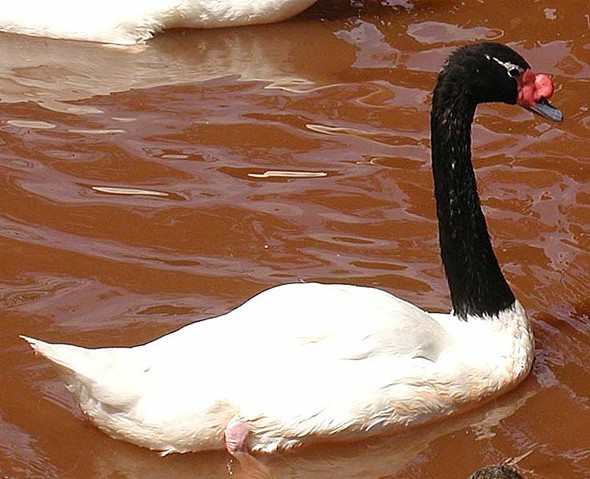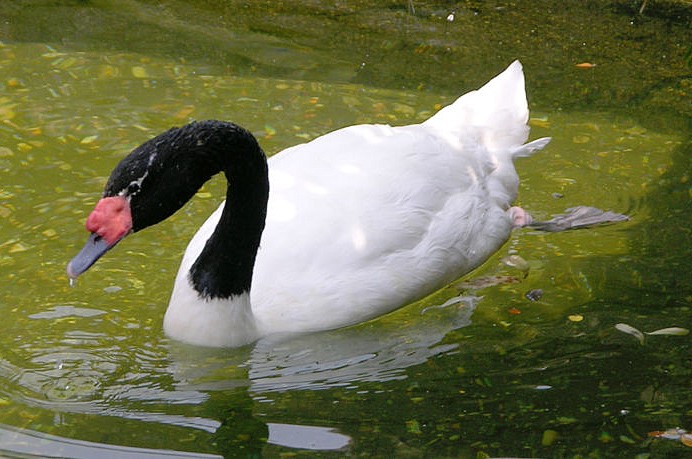Lessico
Cigno dal collo nero
Cygnus melanocoryphus

Black-necked Swan
Scientific classification
Kingdom: Animalia
Phylum: Chordata
Class: Aves
Order: Anseriformes
Family: Anatidae
Genus: Cygnus
Species: Cygnus melancoryphus
Binomial name Cygnus melancoryphus (Molina, 1782)
The Black-necked Swan, Cygnus melancoryphus, is a large waterbird of South America. Adults average 4.7 kg (10.4 lbs), 114 cm (45 in) long and have a wingspan of about 177 cm (70 in). The body plumage is white with a black neck, head and greyish bill. It has a red knob near the base of the bill and white stripe behind eye. Both sexes are similar, with a slightly smaller female. The cygnet has a light grey plumage with black bill and feet. The Black-necked Swan was formerly placed in monotypic genus, Sthenelides.
The smallest member in its genus, it is found in freshwater marshes, lagoon and lake shores in the southern South America. The Black-necked Swan breeds in Patagonia, Tierra del Fuego and on the Falkland Islands. In winter, this species migrates northwards to Paraguay and southern Brazil. The Laguna Blanca National Park in Argentina is a protected home of this swan. The wetlands created by the Great Chilean Earthquake like Carlos Anwandter Nature Sanctuary in Cruces River have become important population centers for the Black-necked Swan.
In 2004 and 2005 thousands of Black-necked Swans in the Carlos Anwandter Nature Sanctuary in Chile died or migrated away following major contamination by a pulp mill located on the Mataquito River which feeds the wetlands. By August 2005 the birds in the Sanctuary had been "wiped out"; only 4 birds could be observed from a population formerly estimated at 5,000 birds. Autopsies on dead swans attributed the deaths to high levels of iron and other metals polluting the water.
The Black-necked Swan, like its nearest
relatives the Black and Mute Swan is relatively silent. Also, unlike most
wildfowl, both parents regularly carry the cygnets on their backs. The female
lays four to six eggs in a nest of vegetation mound. The diet consists mainly
of vegetation, insects and fish spawn.
Widespread and common throughout its habitat, the Black-necked Swan is
evaluated as Least Concern on the IUCN Red List of Threatened Species. It is
listed on Appendix II of CITES.

www.bsc-eoc.org/avibase/